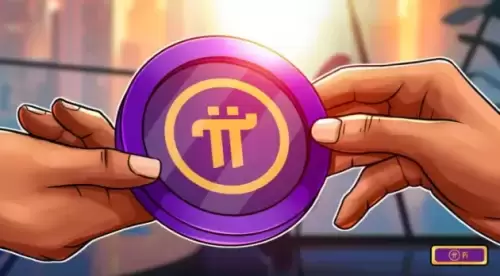 |
|
 |
|
 |
|
 |
|
 |
|
 |
|
 |
|
 |
|
 |
|
 |
|
 |
|
 |
|
 |
|
 |
|
 |
|
Web 3.0の世界はコードと暗号化によって推進されており、ブロックチェーンはデジタルトラストのエンブレムとして立っています。

In the rapidly evolving landscape of Web 3.0, where code and cryptography drive innovation and blockchain stands as the emblem of digital trust, a paradox has emerged. As billions flow through smart contracts and token economies, the issue of blockchain security becomes increasingly pressing.
コードと暗号化がイノベーションを促進し、ブロックチェーンがデジタルトラストの象徴として存在するWeb 3.0の急速に進化する風景では、パラドックスが登場しました。数十億がスマートコントラクトとトークン経済を流れるにつれて、ブロックチェーンセキュリティの問題はますます差し迫っています。
This paradox arises from the fact that while blockchain is designed to foster agility and decentralisation, the increasing sophistication of cyberattacks poses significant challenges to this vision.
このパラドックスは、ブロックチェーンは敏ility性と分散化を促進するように設計されているが、サイバー攻撃の洗練度の増加はこのビジョンに大きな課題をもたらすという事実から生じます。
From smart contract loopholes to weak wallet keys and the broader digital asset spectrum, a multi-layered approach is paramount. In February 2025, the Central Bureau of Investigation (CBI) seized ₹1.08 crore during a crypto fraud probe, highlighting the misuse of digital currencies in financial crimes.
スマートコントラクトの抜け穴から弱いウォレットキーやより広範なデジタル資産スペクトルまで、多層的なアプローチが最重要です。 2025年2月、中央捜査局(CBI)は、暗号詐欺調査中に1.08クロールを押収し、金融犯罪におけるデジタル通貨の誤用を強調しました。
This incident, part of a broader investigation into a crypto scam that began in 2020, underscores the urgency of securing the digital asset ecosystem. Despite blockchain’s reputation for being tamper-resistant, the ecosystem surrounding it—exchanges, wallets, smart contracts and user endpoints—remains vulnerable.
この事件は、2020年に始まった暗号詐欺のより広範な調査の一部であり、デジタル資産のエコシステムを確保する緊急性を強調しています。ブロックチェーンの改ざん抵抗性であるという評判にもかかわらず、それを取り巻くエコシステム(エクスチャング、ウォレット、スマートコントラクト、ユーザーのエンドポイント)が脆弱です。
Trust boundaries are tested as illicit actors refine their tactics, spanning social engineering to exploiting protocol flaws.
信頼の境界は、違法行為者が戦術を改良し、ソーシャルエンジニアリングにまたがってプロトコルの欠陥を活用するためにテストされています。
Securing digital assets requires a multi-layered approach, including rigorous code audits, real-time threat detection, regulatory alignment and ongoing education for users and developers. To truly understand the blockchain security ecosystem, it’s essential to move beyond the notion of it being a singular concept.
デジタル資産を保護するには、厳密なコード監査、リアルタイムの脅威検出、規制の調整、ユーザーと開発者向けの継続的な教育など、多層的なアプローチが必要です。ブロックチェーンのセキュリティエコシステムを本当に理解するには、それが特異な概念であるという概念を超えて移動することが不可欠です。
In the broadest sense, blockchain can be viewed as a collection of interdependent layers, each with its security requirements and vulnerabilities. Every element contributes to the system’s overall integrity, beginning with the protocol layer that defines consensus mechanisms and economic parameters.
最も広い意味では、ブロックチェーンは、それぞれのセキュリティ要件と脆弱性を備えた相互依存層のコレクションと見なすことができます。すべての要素は、コンセンサスメカニズムと経済パラメーターを定義するプロトコル層から始まるシステム全体の完全性に貢献します。
Above this are smart contracts, small programs designed to carry out specific tasks or agreements in a verifiable and automated manner. A flaw in one layer, such as an unaudited smart contract, can expose an otherwise secure network to massive exploits—as seen in numerous DeFi (Decentralised Finance) breaches where a single smart contract vulnerability led to the theft of millions.
この上には、特定のタスクまたは契約を検証可能かつ自動化された方法で実行するように設計されたスマートコントラクトがあります。監査されていないスマートコントラクトなど、1つのレイヤーの欠陥は、それ以外の場合は安全なネットワークを大規模な搾取に公開することができます。これは、単一のスマートコントラクトの脆弱性が数百万人の盗難につながった多数の債務(分散財政)違反に見られるように。
Equally important is the role of wallets and key management, where a single compromised private key can mean the irrevocable loss of digital assets. And with blockchain bridges facilitating interoperability between chains, the complexity—and risk—only intensifies.
同様に重要なのは、財布と主要な管理の役割です。単一の侵害された秘密鍵は、デジタル資産の取消不能な損失を意味します。また、ブロックチェーンブリッジがチェーン間の相互運用性、複雑さ、およびリスクが激化することで促進されます。
Organisations are unlocking new liquidity and fractional ownership by representing physical assets like art, commodities or real estate as blockchain-based tokens. However, this also expands the attack surface.
組織は、ブロックチェーンベースのトークンとしてアート、商品、不動産などの物理的資産を代表することにより、新しい流動性と分数所有権のロックを解除しています。ただし、これにより攻撃面も拡張されます。
Tokenised assets introduce new risks—from incorrect metadata and faulty smart contracts to manipulation of the underlying data. A compromised tokenised asset doesn’t just threaten a digital token—it can call into question ownership and legal rights in the real world.
トークン化された資産は、誤ったメタデータや誤ったスマートコントラクトから基礎となるデータの操作まで、新しいリスクをもたらします。妥協したトークン化された資産は、デジタルトークンを脅かすだけではなく、現実の世界の所有権と法的権利に疑問を投げかけることができます。
Securing these assets, therefore, requires more than just technical audits. It needs regulatory clarity, and secure integration between digital and physical record-keeping systems. Although businesses are increasingly recognising the importance of tokenisation, 76% of firms plan to invest in tokenised assets by 2026.
したがって、これらの資産を保護するには、単なる技術監査以上のものが必要です。規制の明確さを必要とし、デジタルと物理の記録維持システムの間の安全な統合が必要です。企業はトークン化の重要性をますます認識していますが、企業の76%が2026年までにトークン化された資産に投資する予定です。
But there remains a critical need to approach every component of the blockchain ecosystem with equal vigilance. As we move into a decentralised future, the lines between online and offline security will blur even further.
しかし、ブロックチェーンエコシステムのあらゆるコンポーネントに等しい警戒を伴う必要性が残っています。分散型の未来に移行すると、オンラインとオフラインのセキュリティの間の境界線がさらにぼやけます。
One of the emerging security frameworks is Zero Trust Architecture. It simply means never automatically trusting anyone or anything, inside or outside the system. Every user, transaction or device is verified continuously, ensuring that even if a hacker gets in, they can’t move freely or access critical data without re-authentication. It is like installing checkpoints throughout a secure building instead of just at the main entrance.
新たなセキュリティフレームワークの1つは、ゼロトラストアーキテクチャです。それは単に、システムの内外または外側の誰かを自動的に信頼しないことを意味します。すべてのユーザー、トランザクション、またはデバイスは継続的に検証され、ハッカーが入っても自由に移動したり、再認可なしに重要なデータにアクセスしたりすることはできません。これは、メインエントランスのみではなく、安全な建物全体にチェックポイントを設置するようなものです。
Then there’s Multi-Party Computation (MPC), a more advanced yet practical way to manage digital keys. Instead of storing the entire private key in one place (where it could be stolen or lost), MPC splits it into parts and stores them in multiple locations. No single party ever has full access, making it nearly impossible for hackers to compromise it entirely.
次に、デジタルキーを管理するためのより高度でありながら実用的な方法であるマルチパーティ計算(MPC)があります。 MPCは、秘密鍵全体を1つの場所(盗まれたり紛失したりする可能性がある場所)に保管する代わりに、部品に分割し、複数の場所に保管します。フルアクセスを持つ単一のパーティーはありません。ハッカーが完全に妥協することはほぼ不可能です。
Similarly, AML/KYC compliance ensures that users transacting in crypto are verified and monitored to detect suspicious activity. These tools are crucial in deterring fraud and creating a more accountable digital financial system.
同様に、AML/KYCコンプライアンスは、暗号化での取引を検証して、疑わしい活動を検出するために検証および監視されることを保証します。これらのツールは、詐欺を阻止し、より説明責任のあるデジタル金融システムを作成する上で重要です。
Smart contract audits act as a critical checkpoint before any smart contract goes live. Much like how software undergoes rigorous testing or legal documents are reviewed before finalisation, smart contracts must be inspected for hidden bugs, logical loopholes or vulnerabilities that malicious actors could exploit.
スマートコントラクト監査は、スマートコントラクトが公開される前に重要なチェックポイントとして機能します。ソフトウェアが厳密なテストまたは法的文書を受ける方法と同様に、最終化する前に、悪意のある俳優が悪用できる隠されたバグ、論理的な抜け穴、または脆弱性についてスマートコントラクトを検査する必要があります。
Without this step, millions of digital assets can be drained in seconds through a flaw in the code. Audits help ensure that the trust encoded into these contracts holds up under real-world conditions.
このステップがなければ、コードの欠陥により、数百万のデジタル資産を数秒で排出できます。監査は、これらの契約にエンコードされた信頼が現実世界の条件下で耐えることを保証するのに役立ちます。
However, security is not limited to code; it is also about the people interacting with it. That’s where Decentralised Identity (DID) comes into play. As users increasingly move across decentralised platforms, DID gives individuals ownership over their digital credentials without relying on centralised authorities like banks or governments.
ただし、セキュリティはコードに限定されません。それはまた、それと交流する人々についてです。そこで、分散化されたアイデンティティ(DID)が登場します。ユーザーが分散型プラットフォームを越えてますます移動するにつれて、銀行や政府などの集中当局に依存することなく、デジタル資格に対する個人の所有権を与えました。
With DID, users can choose what information to share and with whom, minimising the risk of identity theft, data misuse
そうすることで、ユーザーは誰と共有する情報を選択し、個人情報の盗難のリスクを最小限に抑え、データの誤用を最小限に抑えることができます
免責事項:info@kdj.com
提供される情報は取引に関するアドバイスではありません。 kdj.com は、この記事で提供される情報に基づいて行われた投資に対して一切の責任を負いません。暗号通貨は変動性が高いため、十分な調査を行った上で慎重に投資することを強くお勧めします。
このウェブサイトで使用されているコンテンツが著作権を侵害していると思われる場合は、直ちに当社 (info@kdj.com) までご連絡ください。速やかに削除させていただきます。




























































